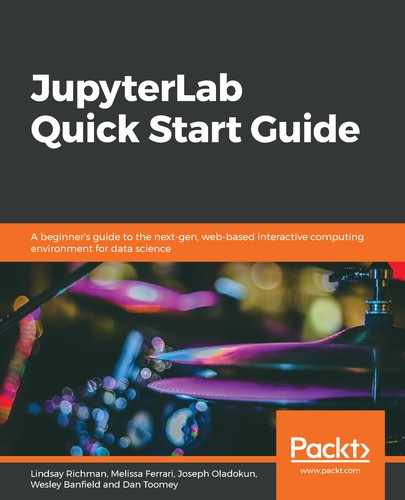JupyterLab provides a robust computational environment that extends the existing capabilities of Jupyter notebooks. Additional functionality for individuals and teams is provided via expanded menu options and extensions that work with collaborative platforms and tools, including GitHub and GitLab. JupyterLab is available as a web application and can be installed locally on a variety of operating systems. This book will cover the content that you will need in order to get started with JupyterLab, as an individual or as part of a team. JupyterLab comes with a Python notebook installed by default, and we will primarily use and reference Python, as well as Python packages, throughout this book.
It is important to note that JupyterLab is constantly evolving, and some of the content provided in this book may change over time, or depend on how your version of JupyterLab is configured. We recommend referring to the project's official documentation (https://jupyterlab.readthedocs.io/en/stable/index.html) to stay informed on updates and releases. Updates are also communicated on Twitter via @ProjectJupyter (https://twitter.com/ProjectJupyter). JupyterLab also has an active forum on Gitter (https://gitter.im/jupyterlab/jupyterlab), where you can ask and find answers to technical questions.
This introductory chapter will cover the following topics:
- Installing JupyterLab with Anaconda Distribution
- Exploring JupyterLab's main features
- Creating a notebook within JupyterLab
- Optional – downloading a text editor
- Optional – creating a GitHub account
